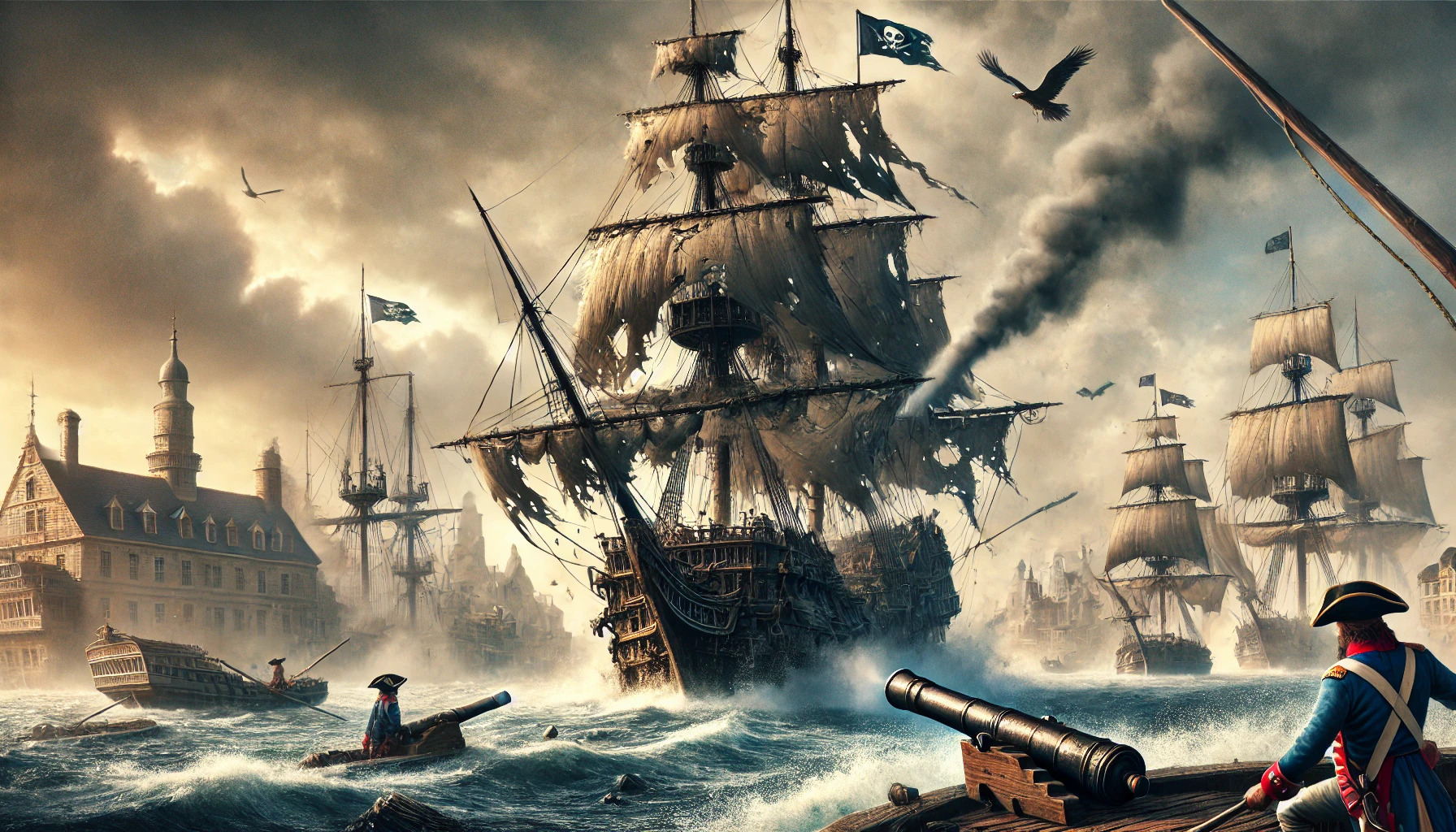The age of piracy conjures images of adventurous sailors, hidden treasure, and high-seas battles. Yet, this thrilling era came to a halt by the early 18th century. Several factors, including increased naval enforcement, changing trade routes, and shifts in politics, played a crucial role in the decline of pirate activity.
As merchant ships became better protected and more advanced technologies emerged, the once-dominant pirates lost their grip on the seas. It was not just external forces at play; the harsh realities of pirate life also led many to abandon their dreams of fortune. Readers may be surprised to learn how these elements intertwined to bring an end to this legendary chapter of maritime history.
Historical Context of Piracy
Piracy has a rich history shaped by social, economic, and political factors. Understanding the context of piracy sheds light on its rise and eventual decline, revealing its significance in global trade and international relations.
The Golden Age of Piracy
The Golden Age of Piracy spanned roughly from the 1650s to the 1730s. This period was marked by a notable increase in pirate activity, especially in the Caribbean. Many pirates were former sailors who turned to piracy after losing jobs due to conflicts like the wars between England and France.
During this time, pirates such as Blackbeard and Bartholomew Roberts became infamous. They targeted merchant ships, taking advantage of poor naval protection. Significant events, like the War of Spanish Succession, created a favorable environment for piracy. As a result, piracy flourished, making a considerable impact on maritime history and trade routes.
Piracy’s Global Impact
Piracy extended beyond the Caribbean, affecting global trade and politics. Pirates disrupted shipping lanes in the Atlantic and Indian Oceans, making them significant players in international commerce.
Their actions compelled nations to improve naval defenses and formulate laws against piracy. The economic consequences were profound, as pirate attacks could lead to increased shipping costs and losses. The presence of pirates also influenced colonial policies. European powers sought to control piracy, leading to conflicts that shaped maritime laws and military strategies.
Decline of Pirate Dominance
The decline of pirate dominance in the seas resulted from various factors, including military advancements, legal changes, and shifts in global trade. Each of these aspects played a crucial role in reducing the influence and activities of pirates during this period.
Naval Advancements and Patrols
During the late 17th and early 18th centuries, significant advancements in naval technology transformed maritime warfare. Ships became faster, more durable, and equipped with better cannons. This increase in naval power made it harder for pirates to outmaneuver naval forces.
Countries began forming stronger naval fleets to patrol shipping lanes. The British Royal Navy, in particular, grew rapidly and was able to protect merchant vessels from pirate attacks. Increased naval patrols led to more captures of pirate ships and crews, contributing to the decline of piracy.
International Laws and Agreements
As piracy grew, nations recognized the need for laws to combat this threat. International agreements began to take shape, making it easier for nations to work together against pirates. Treaties were established to facilitate the arrest and extradition of suspected pirates.
These laws created a legal framework for punishing piracy. Countries that once turned a blind eye began to enforce strict penalties, which deterred many from engaging in piracy. Increased cooperation among nations made it riskier for pirates to operate freely.
Economic Shifts and Trade Evolution
Economic changes also played a part in piracy’s decline. The growth of legitimate trade made piracy less appealing. The rise of the triangular trade network offered merchants better opportunities for profit without the risks of piracy.
As colonies expanded, merchants turned their focus to developing trade routes that were heavily monitored and defended. This meant fewer easy targets for pirates. Additionally, advancements in trade practices made it tougher for pirates to profit from their exploits, leading many to abandon the pirate life altogether.
Iconic Pirates and Their Downfall
Several famous pirates shaped the Golden Age of Piracy, yet their stories often ended in capture or death. The fates of these iconic figures illustrate the challenges and dangers of a pirate’s life on the high seas.
Capture of Blackbeard
Blackbeard, born Edward Teach, became a legendary figure during the early 18th century. His fearsome image included a thick black beard and a penchant for lighting slow-burning fuses in his hair during battles, creating a terrifying spectacle.
In 1718, Blackbeard settled in Ocracoke Inlet, North Carolina. He was captured during a raid led by Lieutenant Robert Maynard of the British Navy. The fierce battle resulted in Blackbeard’s death after sustaining multiple gunshot wounds. His dramatic end marked the decline of piracy in the region and sent a message to other pirates about the consequences of their actions.
Fall of Bartholomew Roberts
Bartholomew Roberts, known as “Black Bart,” was one of the most successful pirates of his time. Active between 1719 and 1722, he captured hundreds of ships and became infamous for his bold tactics.
Roberts met his demise in 1722, near the coast of Gabon, Africa. He was engaged in battle with a British naval vessel. Despite fighting bravely, he was shot and killed during the confrontation. His death was a significant blow to piracy, as he was one of the last pirates to achieve such fame and success before the era began to fade.
Cultural Legacy of Pirates
Pirates have left a lasting impact on culture, influencing how they are viewed in media and society. Their complex legacy blends adventure, rebellion, and romantic ideals that continue to captivate audiences.
Romanticization in Media
The image of pirates has been shaped significantly by films, books, and television. Characters like Captain Jack Sparrow from Pirates of the Caribbean showcase swashbuckling heroes who live by their own rules.
This portrayal adds a sense of adventure and charm to a lifestyle that was, in truth, harsh and dangerous. Movies often depict treasure hunts, cannon battles, and the camaraderie among a crew, glorifying piracy as a thrilling escape.
Literature also plays a role, with classics like Treasure Island romanticizing pirates as lovable rogues. These narratives often emphasize loyalty, bravery, and adventure, painting an appealing picture that attracts both young readers and adults alike.
Modern Pirate Mythology
Contemporary culture has developed a mythology around pirates that blends historical facts with fantastical elements. This includes the enduring symbols of the skull and crossbones and the image of pirates as freedom-loving rebels.
Many modern events and festivals celebrate pirate themes, allowing fans to create their own interpretations of this legacy. Communities host pirate-themed parades, reenactments, and conventions, fostering a sense of camaraderie among enthusiasts.
Video games also contribute to this mythology, with titles like Assassin’s Creed IV: Black Flag immersing players in a pirate’s world filled with exploration and adventure. These games often highlight treasure hunting and naval battles, reinforcing the idea of pirates as adventurous figures.
Through various forms of media and community engagement, pirates continue to capture the imagination, ensuring their legacy thrives in popular culture.

